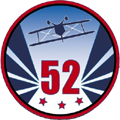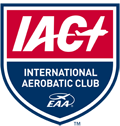


| Safety Wise | |
|
November 1998 |
|
|
Which one of the following acronyms should
be important to you as an acro pilot? - R&B, B&C,
W&B, . Let’s see, R&B - nah, only if you like
it, B&C - maybe because a certified one goes for around
$500 plus, W&B - hot diggity dawg (flashing lights
sound of angel music) ahhh, let’s delve into this
murky subject. Of course I am referring to Weight and
Balance. The last contest I was tech inspecting revealed to
me some interesting view points on the subject. These view
points ranged from blissfully ignorant, to intentionally
ignorant, to just plain ignorant. I can count on one hand
how many actually had a "clue" as to what they must have in
order to comply with the tech inspector’s checklist
item labeled Weight & Balance. Now, before you think I
am preaching and chiding (actually I am), I would like to
point out a sage old aviator saying "if you’re gonna
bust a reg know what you’re bustin". Let’s get
one thing straight, I AM NOT ADVOCATING BUSTING REGS! My
purpose is to educate not pontificate. A quick refresher is
in order.
An airplane is a balancing act. It must
be within the balancing parameters (CG envelope) in order
to remain within balance - think of a teeter totter,
see-saw, whatever. The important thing is that if does not
balance then the aircraft and you have entered into the
test pilot regime. The actual point of balance is called
the center of gravity (CG) it has an envelope which allows
a small degree of travel fore and aft to accommodate shifts
in loading preferences. The Feds come along and state that
if it is to be a certified aircraft it must stall at 61
knots or less at max gross weight with the furthest aft CG.
If it cannot, the W&B limits must be adjusted until it
can do so. So what does this mean? Simply stated an
aircraft can fly outside of its CG limit, however it will
continue to become more and more unstable until it is
uncontrollable as the CG gets farther and farther out of
limits. The second factor has to do with the maximum weight
the aircraft can accommodate and still perform to the
requirements of Part 23. This part goes into millimetric
detail as to gust loads, climb gradients, design fuel loads
etc. Suffice to say after crunching numbers and looking at
a bunch of performance graph curves, a maximum weight for a
condition (normal and acro) is derived and then voila! you
have a CG envelope and maximum weight for an
aircraft. So what is the tech inspector looking for? FAR’s state that you must have W&B figured out for every flight. This means that to be in one hundred percent compliance you must calculate a W&B each time you fly, unless of course you fly the aircraft loaded the same way every time. Then a pre-calculated W&B is acceptable. This W&B data must include the current data for you personally, not a theoretical. In other words let’s say you weigh about 170, the weight and balance data in your aircraft must show a situation with a pilot who weighs about 170, not a pilot who weighs 200. If a Fed ramp checks your aircraft and you don’t have an applicable W&B problem worked out, you will be found in violation of Part 91.103 Pre-Flight Action (b)-2. The tech inspector should be verifying that you have a current (dated from your last aircraft empty weight log book entry determination) and accurate weight and balance problem for your particular conditions for that particular day. If you can establish that you are in compliance with a pre-computed W&B situation then that is just fine. Handing the tech inspector a copy of the "Sample Weight & Balance" from your aircraft manual does not comply either with the FAR or IAC contest intent and should be grounds for failing a tech inspection. Don’t guess about your weight and balance, figure it out and know what you are dealing with. Then you will be making an educated decision as to how to fly your aircraft as compared to having something bite your butt "out of the blue". W&B is very simple, but unless you are familiar with it can at first appear confusing, if you have any questions or if you would like me to help you get yours sorted out give me a call, I will be happy to help. Capt. Ron Spencer can be contacted via email at gwiz@idsi.net - Ed. |
|